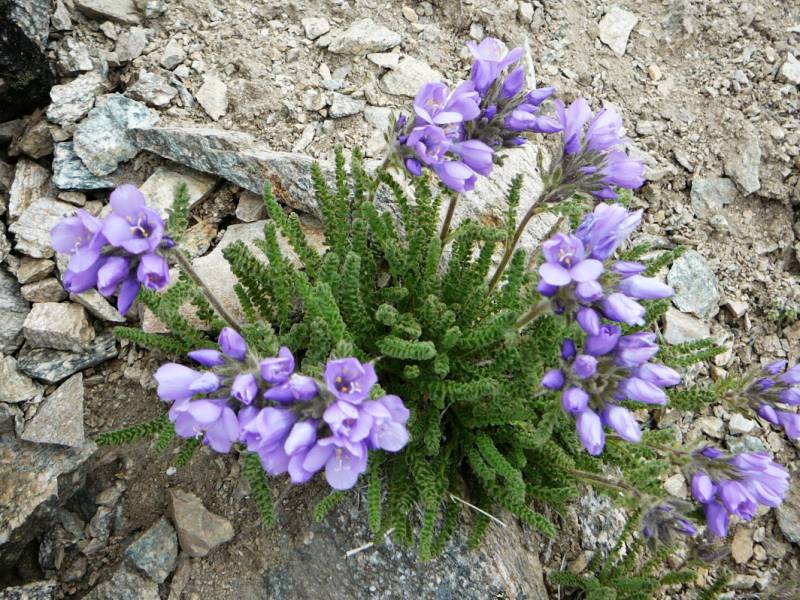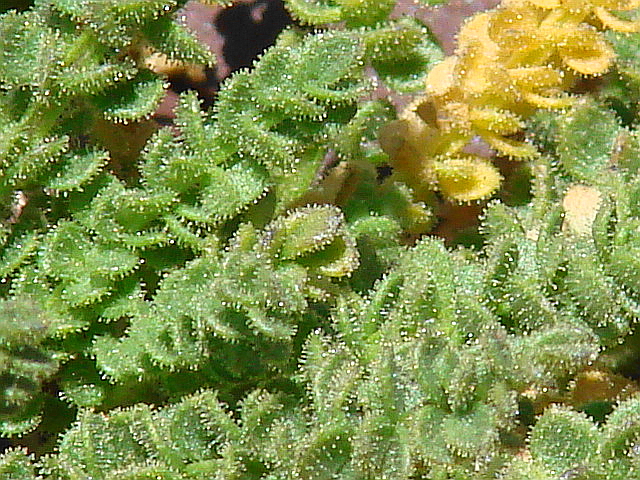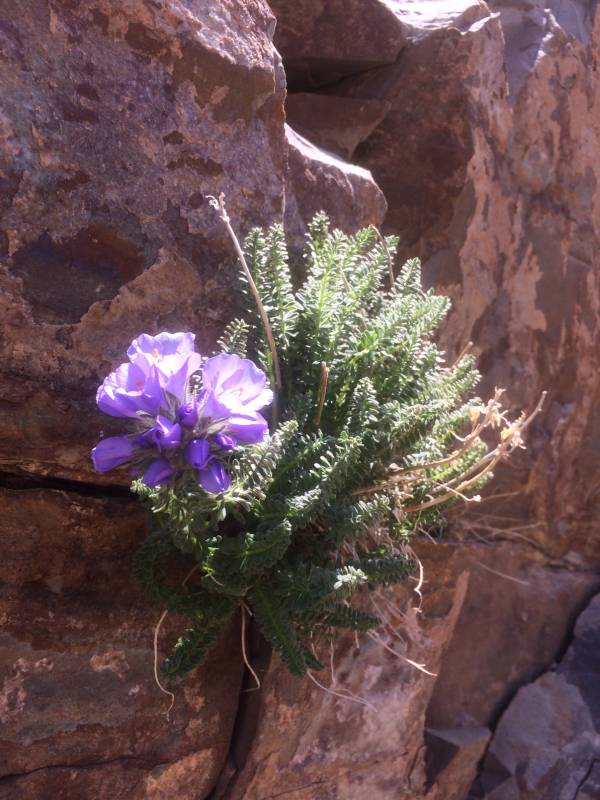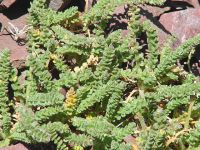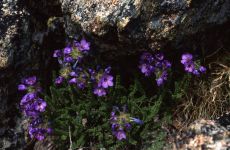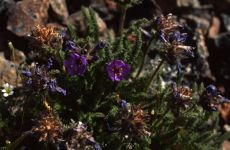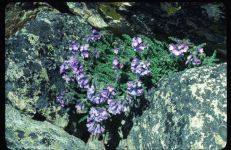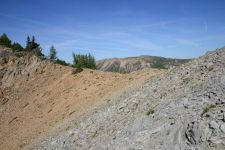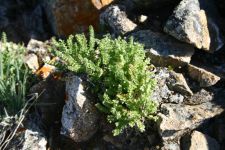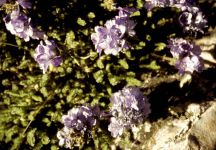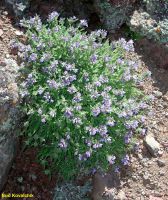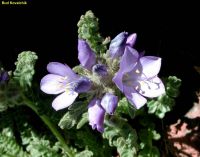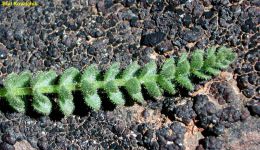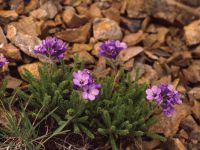Distribution: Occurring east of the Cascades crest in Washington, where known only from Okanogan County. British Columbia to Oregon and Nevada, east to the Rocky Mountains.
Habitat: Open rocky places at high elevations in the mountains, commonly above timberline.
Flowers: July-September
Origin: Native
Growth Duration: Perennial
Conservation Status: Sensitive in Washington (WANHP)
Pollination: Bumblebees
Low perennial from a stout, branched taproot, the stem up to 2 dm. tall, strongly glandular and smelling of skunk.
Leaves mostly basal, pinnate, up to 1.5 dm. long including the short petiole; leaflets crowded, numerous, 2-5 cleft nearly to the base, the individual segments 1.5-6 mm. long and 1-3 mm. wide
Inflorescence capitate; calyx herbaceous, 7-12 mm. long, the 5 narrow, pointed lobes shorter than the tube; corolla blue, funnel-shaped, 17-25 mm. long, noticeably longer than wide, the tube longer than the 5 lobes; stamens shorter than the corolla; style 3-parted; ovary superior.
Capsule 3-celled.
Publication: J. Acad. Nat. Sci. Philadelphia, ser. 2, 1: 154. 1848.
Polemonium viscosum Nutt. ssp. lemmonii (Brand) Wherry
PNW Herbaria: Specimen records of Polemonium viscosum in the Consortium of Pacific Northwest Herbaria database
WA Flora Checklist: Polemonium viscosum checklist entry
OregonFlora: Polemonium viscosum information
E-Flora BC: Polemonium viscosum atlas page
CalPhotos: Polemonium viscosum photos

